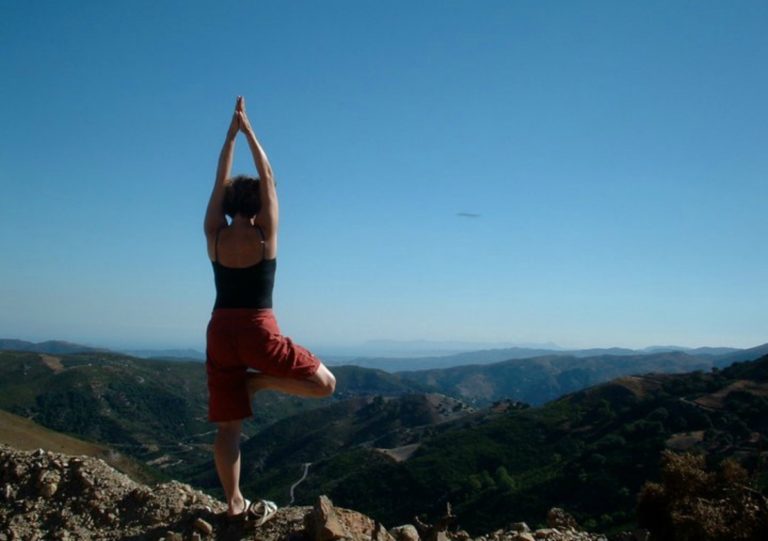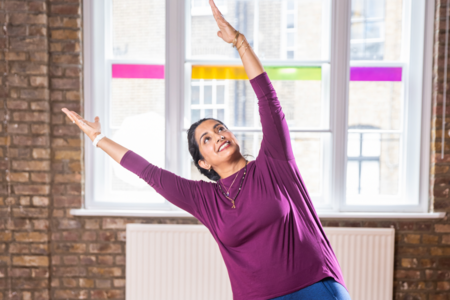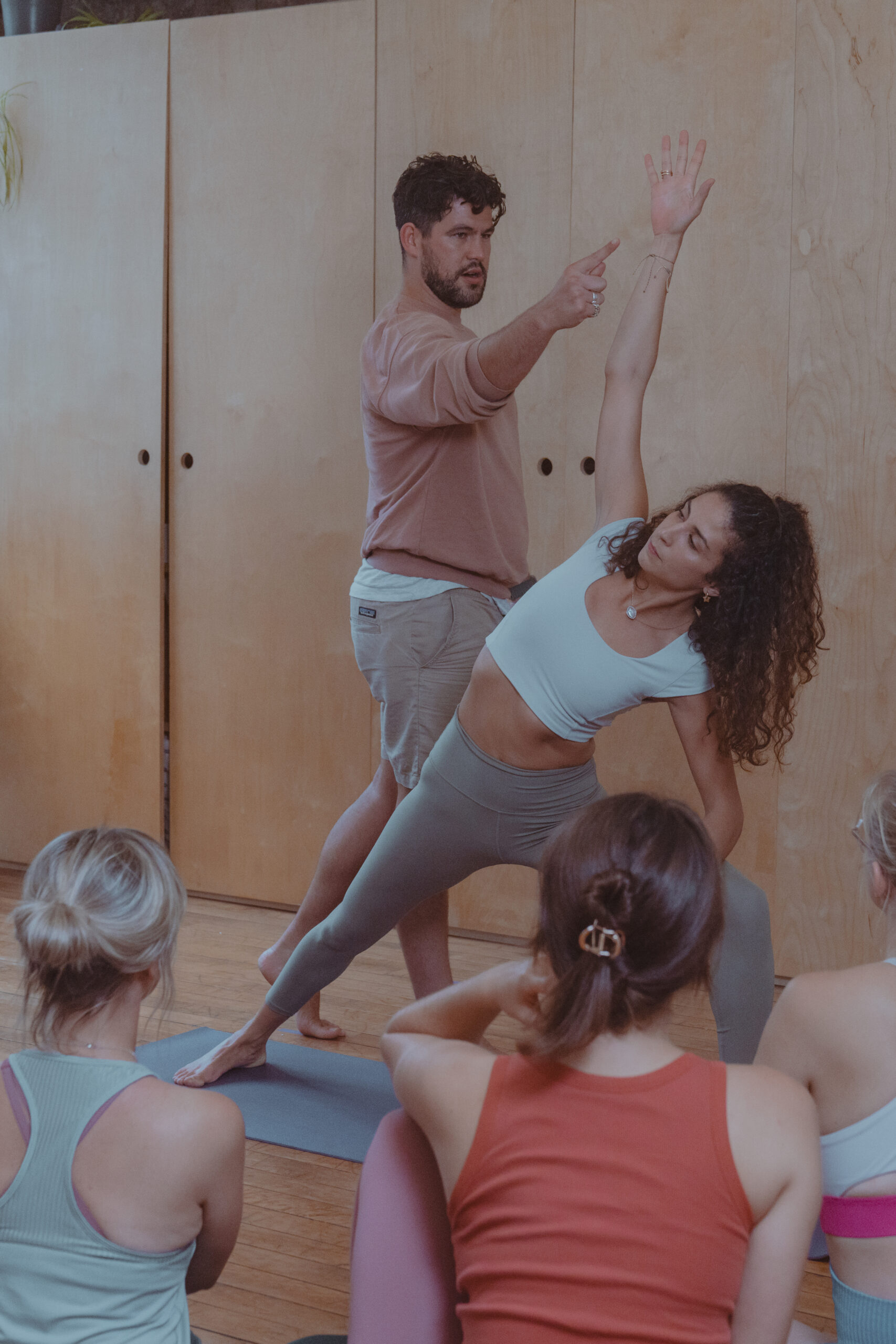For those trying to decide whether to come to an Iyengar yoga class, here is a little bit of background explaining how Iyengar yoga is different from other forms of yoga and why you might want to try it.
One of the first things you’re likely to notice when joining an Iyengar class is the emphasis on technique and postural alignment. This structural alignment is obviously useful in developing good postural habits, but it also helps anchor a wandering mind, as the mind becomes more focused then the emotions also become calmer. Secondly, whilst different poses are taught each week, every class has a sequence of poses which build in to a challenge and then quieten the body and the mind. This way of sequencing poses (and not following a set repeated sequence) is an integral part of the method leading the student into a calm and grounded state. Finally, as the student becomes familiar with the poses and the body starts to open, time spent holding the poses is extended so that the practitioner develops strength alongside flexibility.
Even if you haven’t heard of B.K.S. Iyengar, if you practise any form of yoga, he has definitely touched your life. Few people have done more to spread not only the practice, but our understanding of what it is we are practising.
who is B.K.S. Iyengar?
Mr Iyengar was one of 13 children born in Bellur, South India and he came to yoga in his mid-teens when he went to live with his brother-in-law Tirumalai Krishnamacharya. In 1937 Iyengar moved to Pune where he based himself for the rest of his life. In 1966 he put together his first book ‘Light On Yoga’ – a collection of 200 photographs along with detailed instructions of how to get in and out of the poses and what to work on whilst you are in the pose. One of the most interesting things about this book is that in the back there is a 300 week course on how to progress in the asana and pranayama. From very early on Iyengar wanted his students to practise on their own and develop in the subject. He was giving us the opportunity to observe ourselves in our own yoga, wherever we are and whatever our lifestyle. So far ‘Light On Yoga’ has been translated into at least 17 languages! Mr Iyengar’s other books include Light On Pranayama and Light On Life
In the 70s Mr Iyengar built the Ramamani Iyengar Yoga Institute, dedicated to his late wife and where his son, Prashant Iyengar and daughter Geeta Iyengar now teach alongside his granddaughter Abhijata. Iyengar students are welcome to spend a month working with the family – but be warned the classes are packed.
the importance of props
If you come to a class at triyoga you will notice the wall ropes, bricks and blocks. Mr Iyengar specifically developed the use of all these props to assist him in his own asana practice. The props are used in many ways. If you are a student practising with limitations then props are used to make the poses accessible. They are just as likely to be used in a way to challenge the student and make the pose harder, or perhaps they are used to allow students to stay in poses longer to reap the benefits of the pose without the strain.
They are always used in a way that creates better alignment and opening. The significance of the props is quite important as they have made yoga available to people of all ages and abilities. Iyengar himself practised into his 96th year and I remember seeing him in Pune in 2012 with weights on his legs in Supta Virasana staying there for 10 minutes or more. What I understood from seeing this was that the body and the mind have to be in a calm and quiet place to do these extending timings. It doesn’t happen when you’re straining on a physical level.
Iyengar teachers follow a standardised teacher training so an Iyengar student can travel the world and find a familiar structure and understanding of the poses. Those who practise Iyengar yoga talk of the wider Iyengar family and it really is a very big family. I have travelled to France, South Africa, USA, Nepal and India and found fellow students to go to class or practise with outside of class.
The triyoga Ealing Iyengar family comprises of Megan Martin, Cath Barnes-Holt, Simon Turner and Khaled Kensi. Come and see how a slower detailed and technical practice can develop your strengthen and stamina whilst leaving you feeling calm and energised.
Join Megan for a 6 week Iyengar yoga beginners course starting on Sunday 20th May in Ealing. Click here to book and find out more.
Megan teaches Iyengar Level 1 from 11.00am – 12.15pm on Wednesdays and Iyengar Level 2 from 7.30 – 8.45pm in Ealing.
Megan Martin discovered Iyengar yoga in 1992 and completed her teacher training at the Iyengar Institute in Maida Vale in 1999. Megan was part of the early triyoga team when we opened in Primrose Hill 15 years ago and has since taught regularly in West London and as part of the team at The Iyengar Institute, where she has also chaired the Teaching Committee and sat on the Board of Trustees. Her own practice and development continues; attending teacher’s classes held by Senior Iyengar teachers, attending the annual convention and PD days/ courses throughout the year. When not in class Megan is often walking or climbing a mountain somewhere in Britain or Europe.










